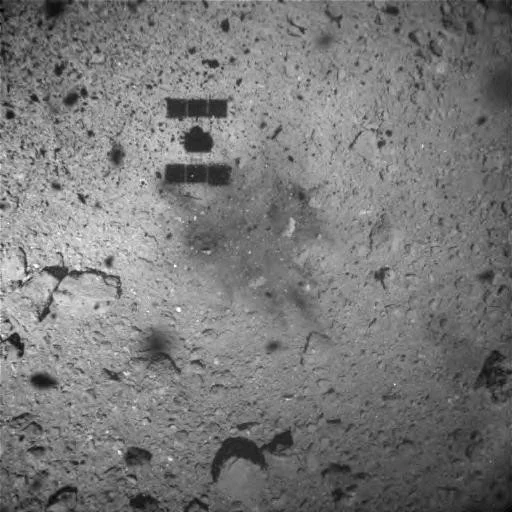As of today, 13 November 2019, JAXA’s Hayabusa2 spacecraft is on a year-long journey back to Earth after nearly 17 months exploring the asteroid Ryugu. JAXA has flawlessly executed the mission so far, building upon lessons learned from the first Hayabusa mission. After one of the fastest atmospheric entries ever, the samples will provide invaluable insight into pristine asteroid regolith.
Read MoreArizona State University recently held a public event called “Space to Thrive”, laying ot the vision for the Interplanetary Institute. In a future where millions of humans live and work in space, every aspect of humanity will be present. The Interplanetary Institute seeks to show how cross-disciplinary teams will tackle the problems of space settlement.
Read MoreWelcome to The Space Resources monthly newsletter for October 2019. SpaceX announced aspirational lunar goal, NASA’s VIPER rover will survey the lunar south pole, and the first all female space walk.
Read MoreWelcome to The Space Resources monthly newsletter for September 2019. With the first concrete pour occurring in space, talks of how sustainably feed one million people on Mars, and SpaceX’s Starship taking shape, the field of space resources is making great progress for tomorrow.
Read MoreFor over 30 years, NASA has been doing the research necessary to develop self-sustaining life support by studying crop growth systems. The ability to grow plants at high volume in space will lead to mass production of space-grown produce that will gradually replace Earth launched food supplies. Ideally, this will provide a cheaper, healthier, and tastier food source for astronauts.
Read MoreWelcome to The Space Resources monthly newsletter for August 2019. India is about to land Chandrayaan-2 on the Moon, Arecibo Observatory gets critical funds to study asteroids, and water thrusters are picking up steam.
Read MorePlanetoid Mines is a privately-owned startup based out of New Mexico, USA whose primary focus is developing the core components of asteroid mining.
Read MoreWelcome to The Space Resources monthly newsletter for July 2019. With the 50th anniversary of Apollo 11 behind us now, it appears that the Artemis mission is gaining steam and may very well join Chandryaan-2 on the surface of the Moon soon (we hope!).
Read MoreWelcome to The Space Resources monthly newsletter for June 2019. NASA space resources grants galore!
Read MoreTransAstra was one of two groups awarded the first ever NASA Innovative Advanced Concepts (NIAC) Phase III grant. TransAstra will use the Phase III funds to advanced its first flight demonstration mission of the Mini Bee asteroid mining concept. The Mini Bee spacecraft will be about 250 kg in size, and will test the optical mining concept in a space environment using a synthetic asteroid launched from Earth. The CI-type asteroid simulant will be made by the Florida-based company Exolith Labs using leftover materials from Deep Space Industries before they shut down. Expected to launch in the early 2020s, this will be the first time water is extracted from material similar to asteroids while in space.
Read MoreDr. Doug Plata from The Space Development Network hosted a two part session on Earth independence. This involves the idea of reducing a future space colony's dependence on importing essential goods from Earth for survival. Independence from Earth can only be achieved via in-situ resource utilization, which is the process of converting local resources into required goods. Until this happens, any future space colony will be dependent on shipments from Earth for survival.
Read MoreA science team led by Alessondra Springmann found that heating up various types of carbonaceous chondrite meteorites released water as well as other volatile and toxic trace elements. Water is likely one of the very first resources that will be sourced from space for use in space. It is versatile for a variety of applications, including rocket propellant, consumption by astronauts, and bulk radiation shielding.
Read MoreWelcome to The Space Resources monthly newsletter for May 2019. SpaceX deployed the first 60 Starlink satellites, water was identified in Itokawa asteroid samples, and announcements about NASA’s 2024 lunar ambitions.
Read MoreIn-space manufacturing promises to be a key driver for developing space resource technologies. Building and assembling large structures in space allows the use of efficient designs that don’t require robust structures for the one time g-force requirements of launch. Made In Space has recently proposed a long-baseline interferometer that uses in-space manufacturing techniques for assembling opposing booms up to 50 m (164 ft) in length from a 24U small-sat chassis.
Read MoreWater has been directly observed from two samples returned from the S-type asteroid Itokawa. It was hypothesized that S-type asteroids contained low concentration water bearing minerals due to light curve data and studying similar minerals on Earth. However, the two Itokawa samples contained high concentrations of water at 698 and 988 parts per million weight, respectively. This holds great promise for asteroid processing targets if similar S-type asteroids have similar water concentrations.
Read More













